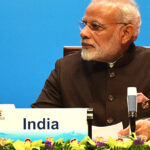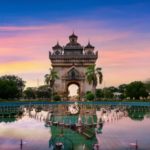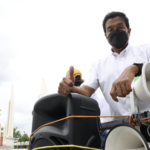
Last week, newly-elected Bangkok governor Chadchart Sittipunt signed an order that declared seven public areas as suitable venues for public demonstrations, including the Bangkok Youth Center, Lan Khon Mueang Town Square, an area under the Ratchavipha Bridge, and four others. Chadchart had suggested that designating the seven areas would both ease the impacts of protests on Bangkok’s commuters, as well as keep protesters safe. Protesters would need to give at least 24 hours notice before the city can authorize and prepare for them.
Concerns linger however, that while Chadchart’s seven areas would be authorized under the Public Assembly Act, that any action from the city of Bangkok could simply be overruled by the Emergency Decree, which remains despite somewhat encouraging signs of a national COVID-19 recovery. Thai Prime Minister Prayut Chan-o-cha initiated the decree in March 2020 in response to the coronavirus, however critics have repeatedly warned that the edict further harms the rights of Thai people.
In seeking balance between executive authority and ensuring a space for political rights, Bangkok’s new governor should err on the side of human rights. Thailand’s shrinking civic spaces are a major concern and are a part of a global pattern. Under the umbrella of security and public health, authoritarian governments have obstructed civic spaces around the globe, with as much as 87 percent of the world’s population now living in countries that have been classified as closed, obstructed, or repressed.

Critics have claimed that Prayut used COVID-19 as a means to further control public criticism, even threatening criticism during the pandemic. Authoritarian controls were common as “pandemic backsliding” occurred among 55 autocratic regimes around the globe. Thailand’s growing militarization under Prayut prior to the pandemic made Thailand particularly vulnerable, with restrictive laws used as political weapons, and public harassment and arrest of dissenters speaking out against the regime.
Clearly Chadchart is navigating new political waters, particularly after being threatened with legal action by Srisuwan Janya, a political activist who earlier challenged his election by claiming to the Election Commission that illegal vote buying had taken place. However, the onus is on Chadchart as Thailand’s new democratic icon. While he did not specifically say that protesters could not hold demonstrations in other areas of the city, there’s a suggestion that protests should occur within Prayut’s already restrictive environment.
For years, it has been Thailand’s civil society that has pushed back against repression and often brutal state responses to public protest. Thailand has been among the worst offenders in the world with human rights defenders and civil society leaders having suffered prolonged detention, forced disappearances, and unexplained killings. While political leaders who have campaigned against the military-backed government have been charged with an array of charges including lèse majesté, Chadchart has an obligation to use some of his earned political capital to expand and defend public protests within his jurisdiction.
Chadchart is right to be concerned about a return of violent protests, and has rightly asked relevant agencies like the Bangkok Metropolitan Administration (BMA) to assist if and when people are injured. However, he could also be a greater voice for moderation and non-violent methods of expressing concerns. Aswin Kwanmuang, the previous junta-appointed governor, had little to no credibility on the issue, having been intimately involved in the 2014 PDRC protests that eventually brought about Prayut’s coup d’etat.
As Bangkok governor, Chadchart has the opportunity to bridge the cavernous divide between civil society and elected officials. In demonstrating his determination to protect citizens from harm and widen civic spaces in the city, Chadchart would both reinforce social and political norms of political rights and foster increased accountability among agencies and departments. In this pursuit, however, it is best to tread lightly. In an authoritarian system like Thailand, expectations must be tempered, as there is much the governor cannot do. Thailand’s compromised institutions, like the Royal Thai Police, show no promising signs.
As Bangkok’s first elected governor in several years, it is also incumbent upon Chadchart to remind Bangkokians of the city’s democratic heritage. Landmarks like Democracy Monument— even the Ratchaprasong intersection in the central business district—are permanently embedded in the collective memory and political DNA of many. Either erected to commemorate the 1932 revolution or a symbol of a dark and turbulent period in Thai history, these spaces must be reclaimed.
Finally, while Chadchart has made plenty of welcome impressions during his short time in office, visiting communities and connecting with his constituents, he could also serve as bridge builder between disparate protest groups, encouraging dialogue and urging restraint. If civic spaces are to be expanded despite an austere environment, this is critical. Chadchart has his work cut out for him. Thai democracy depends on it.






